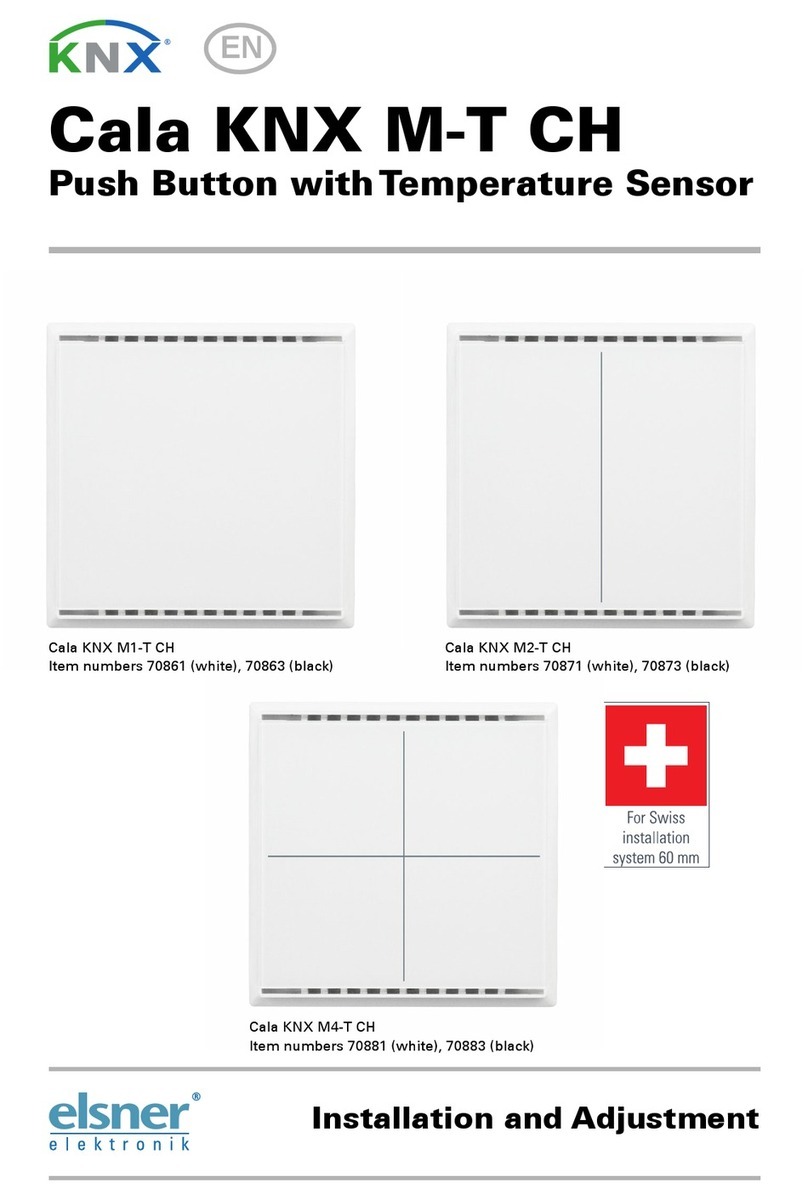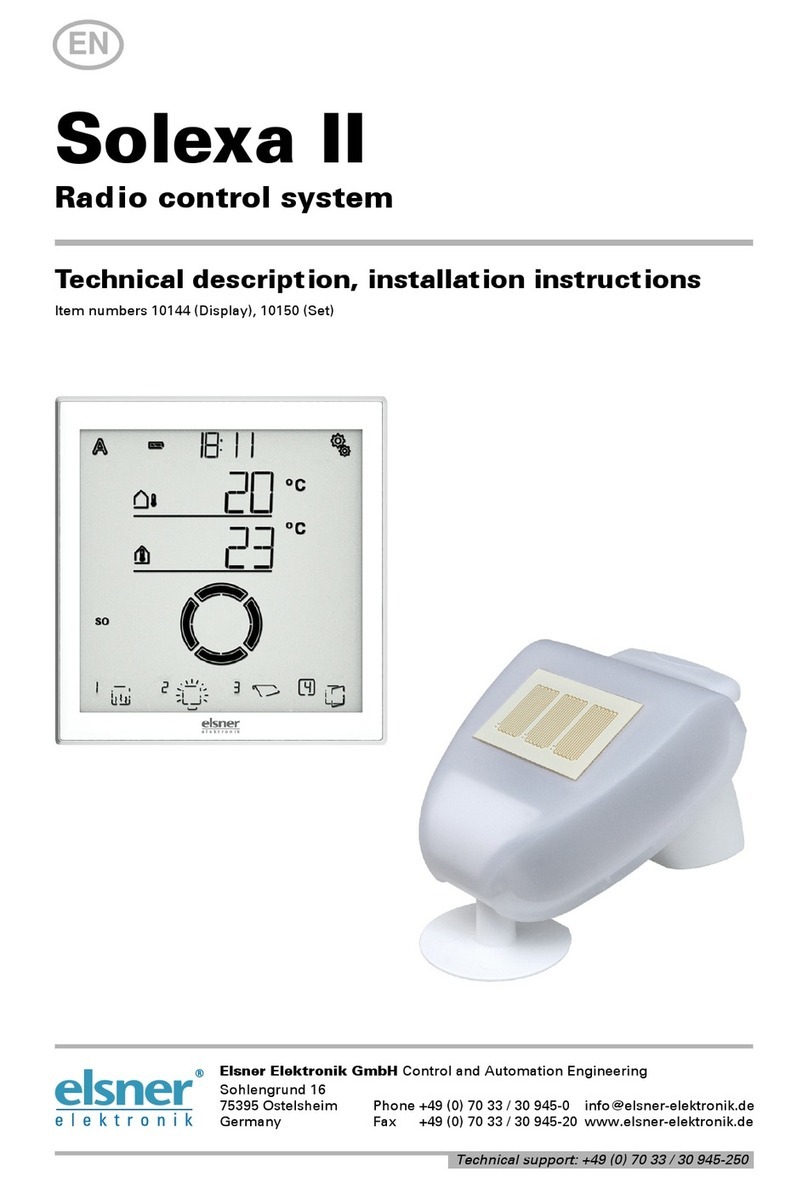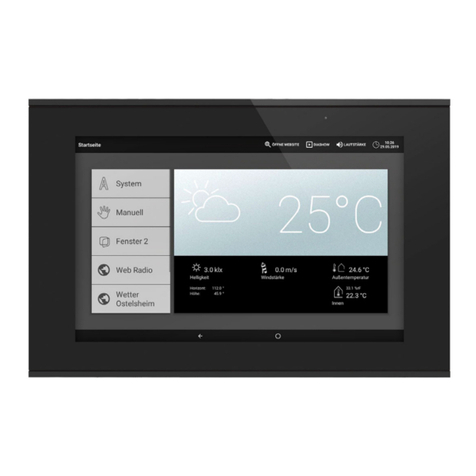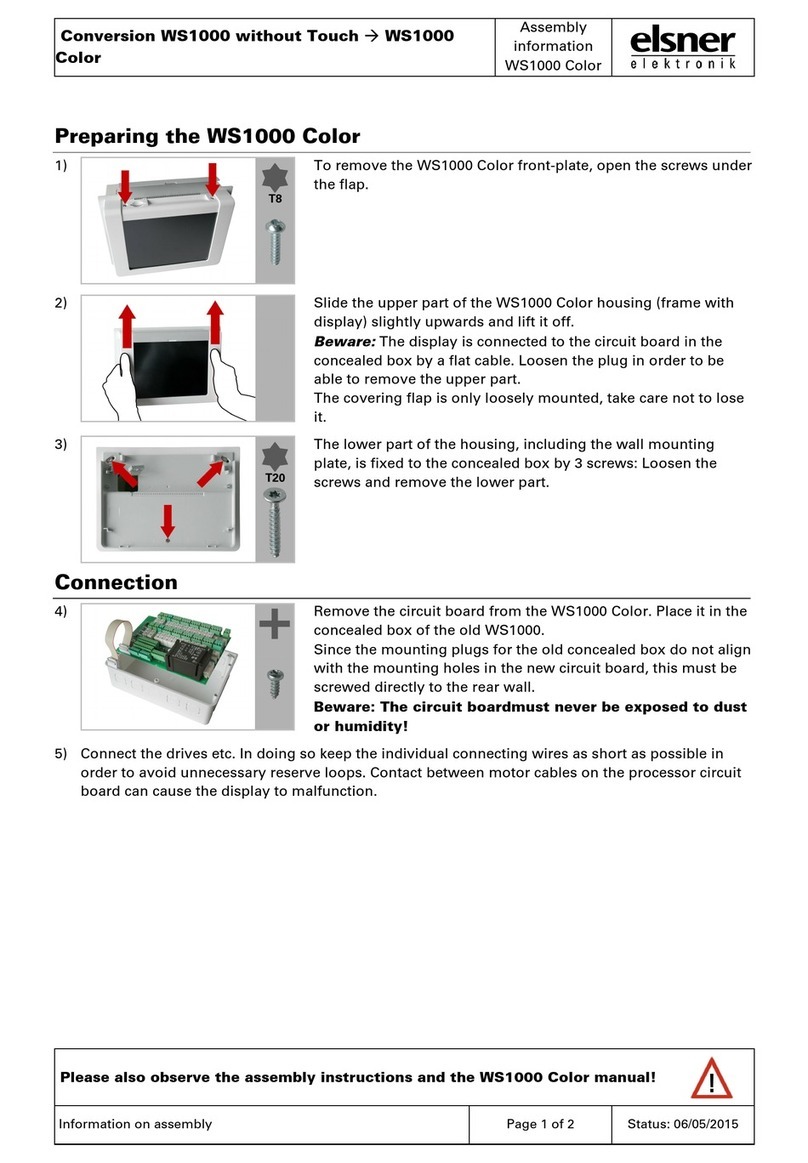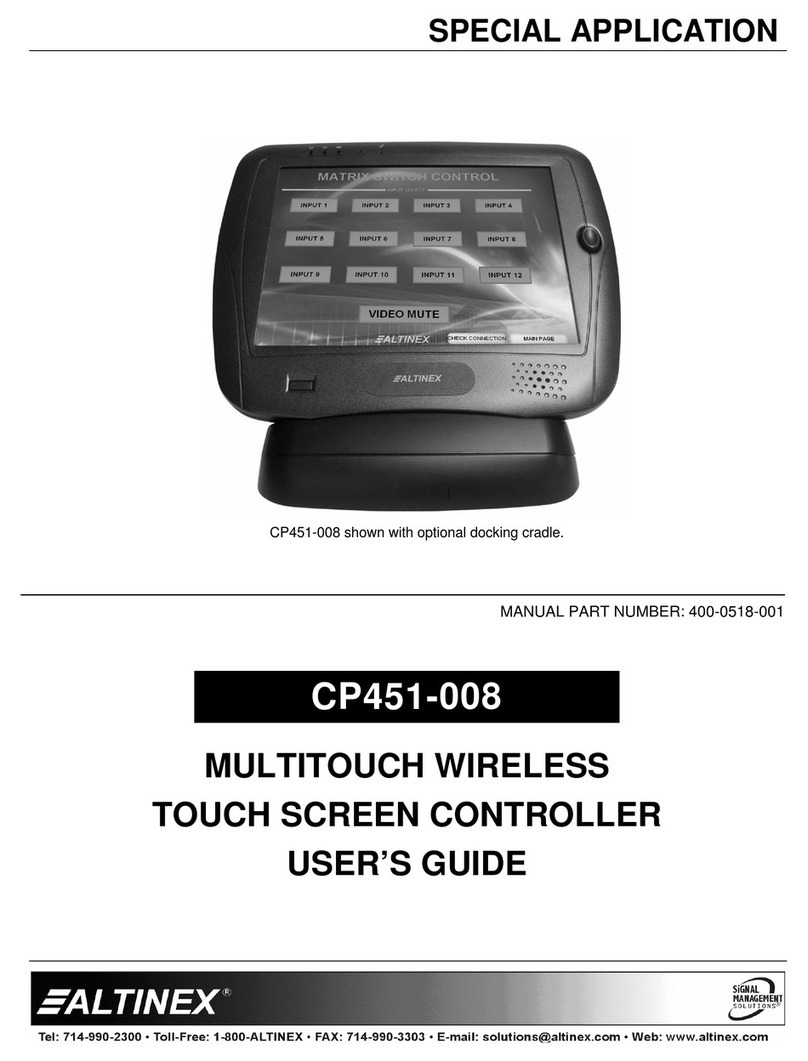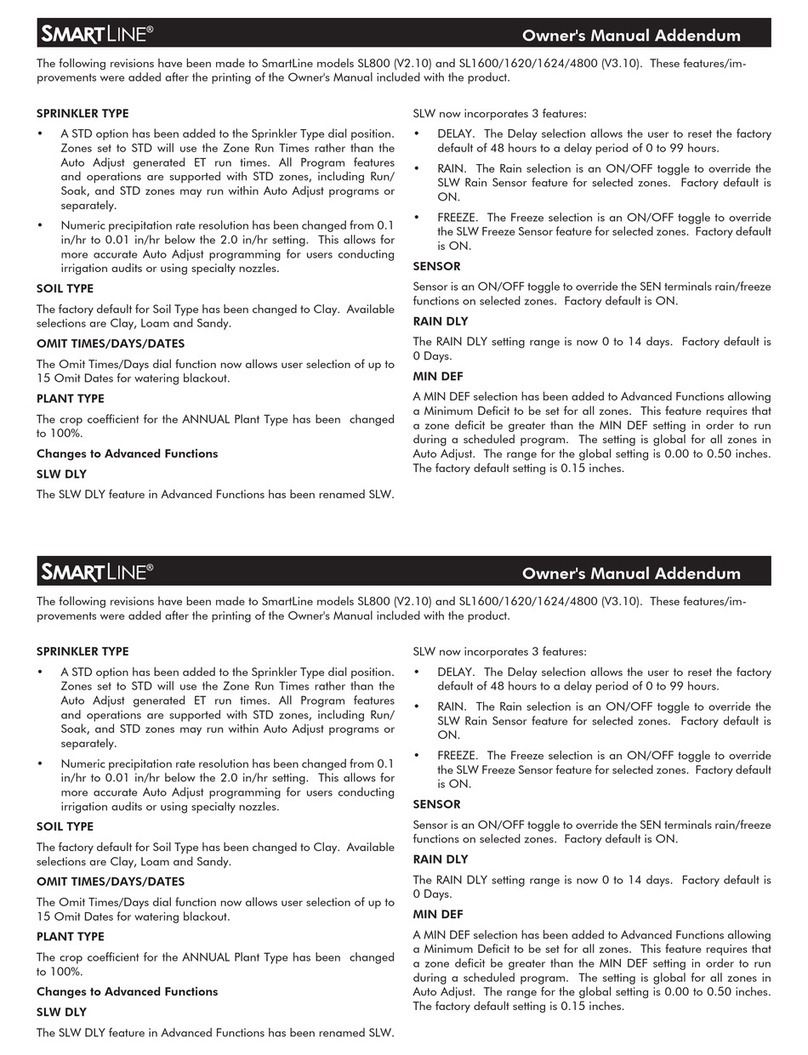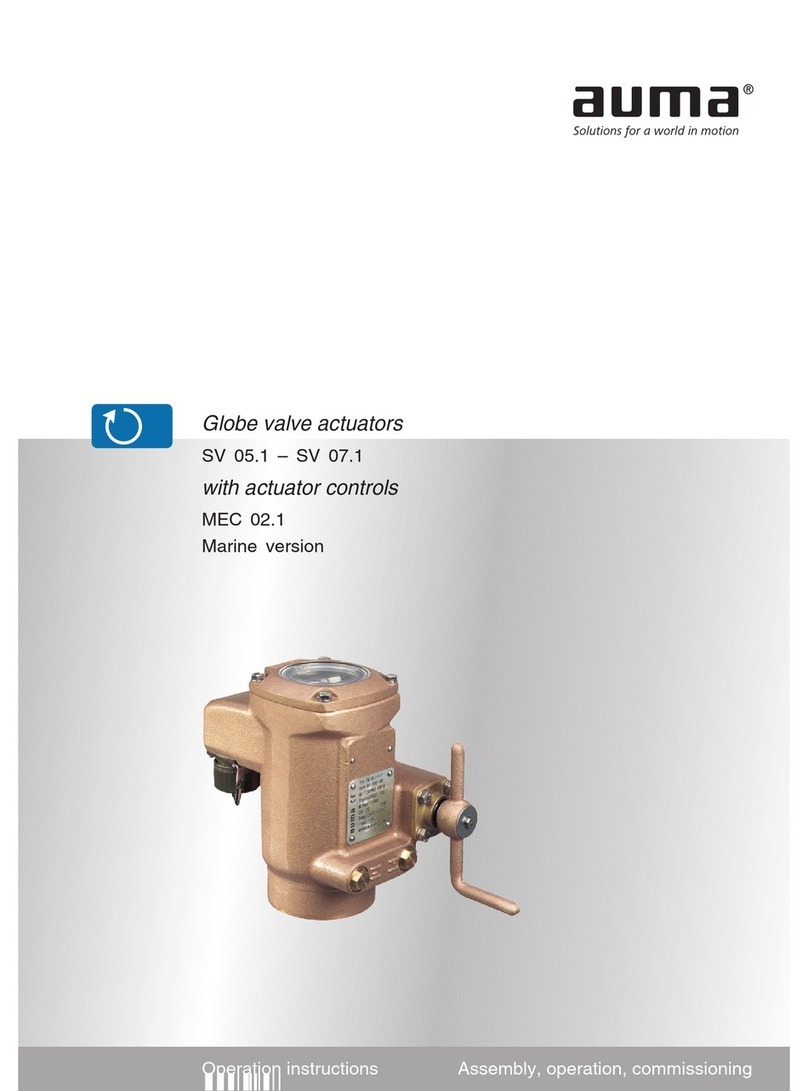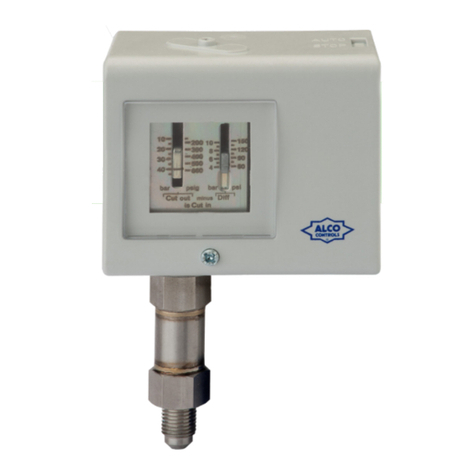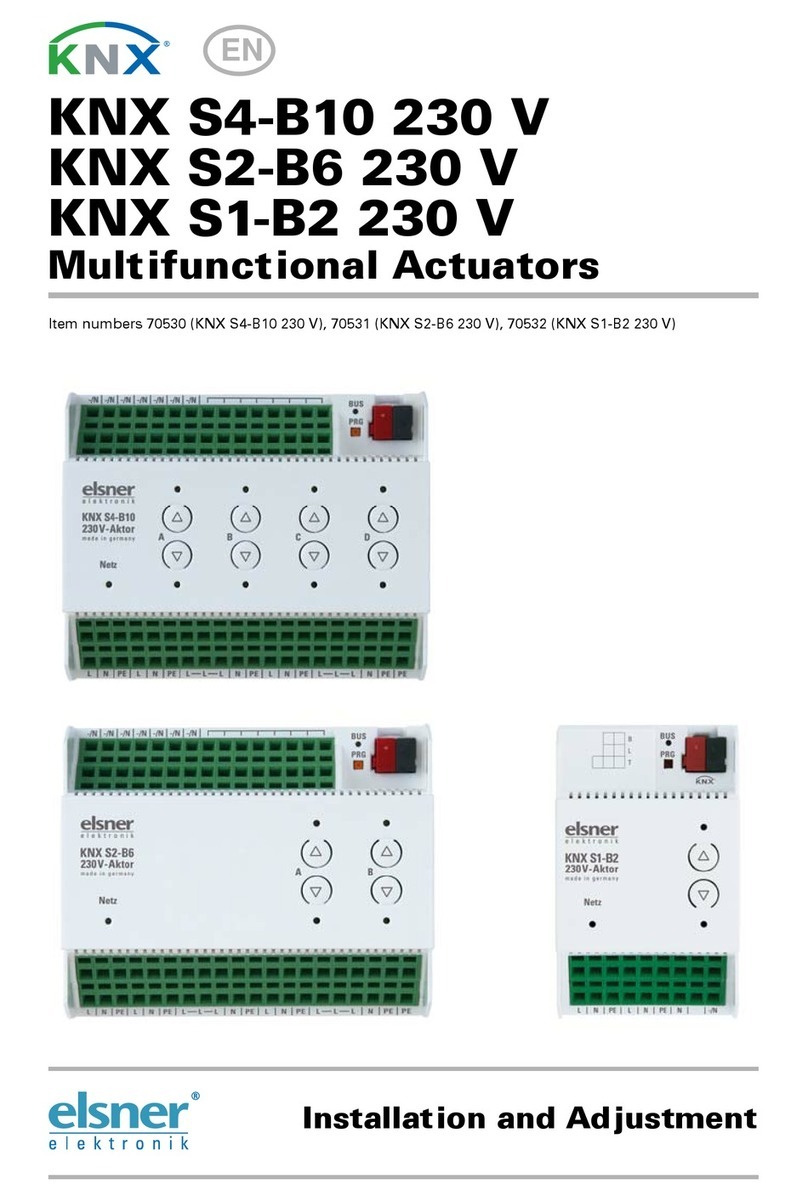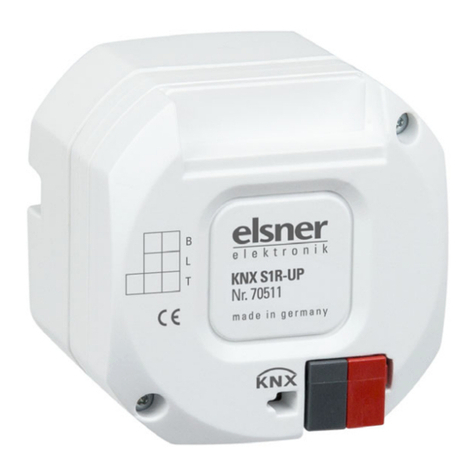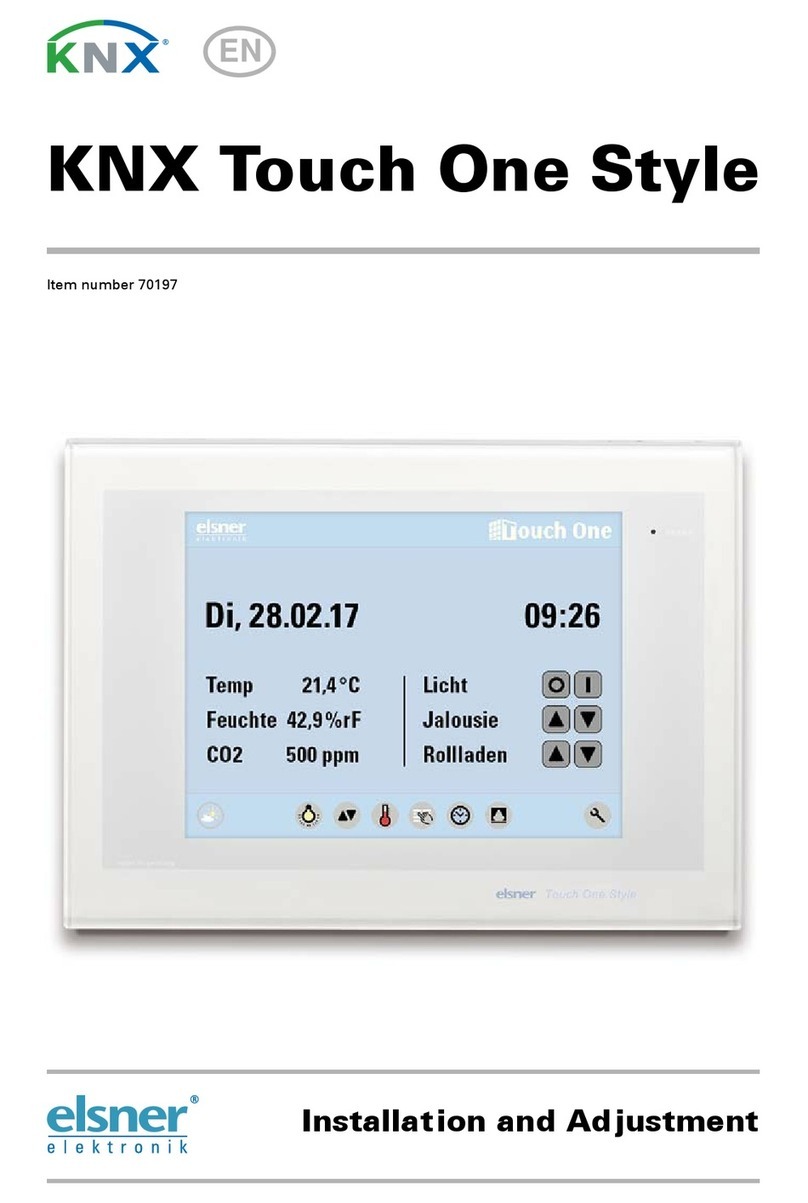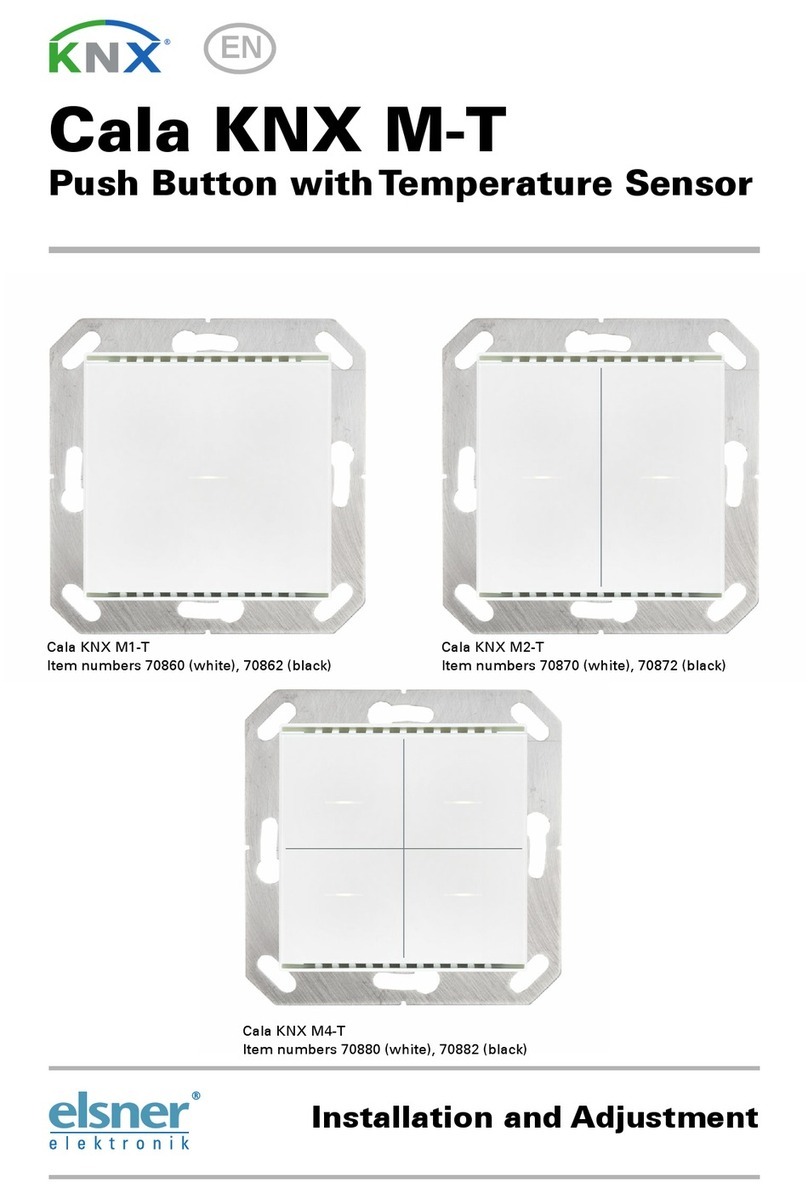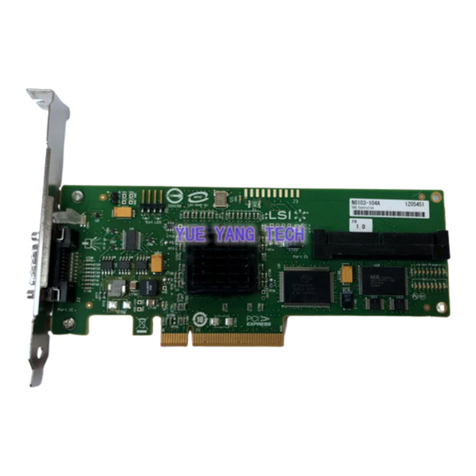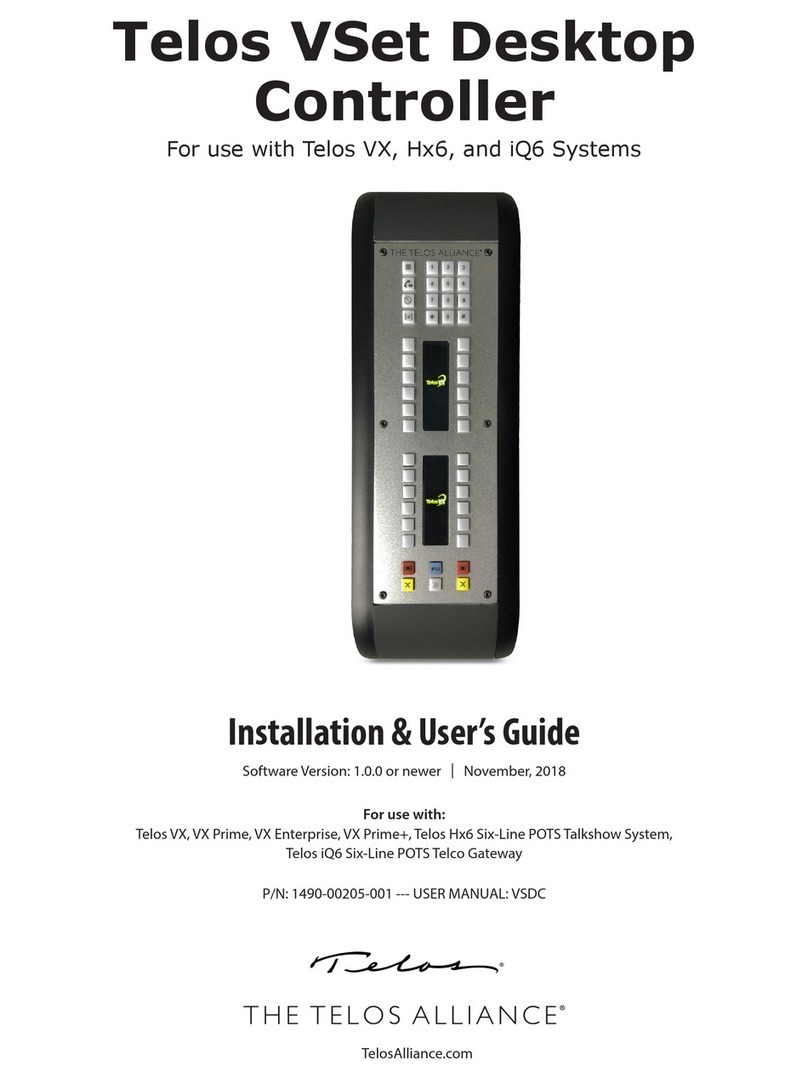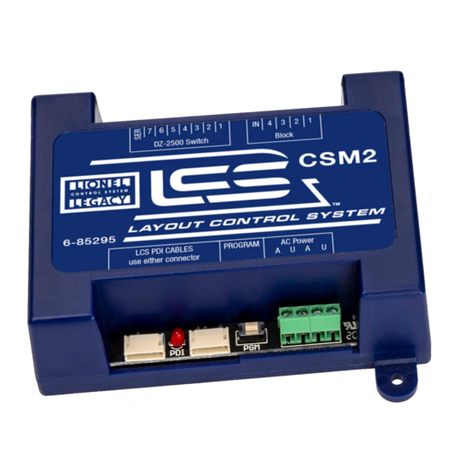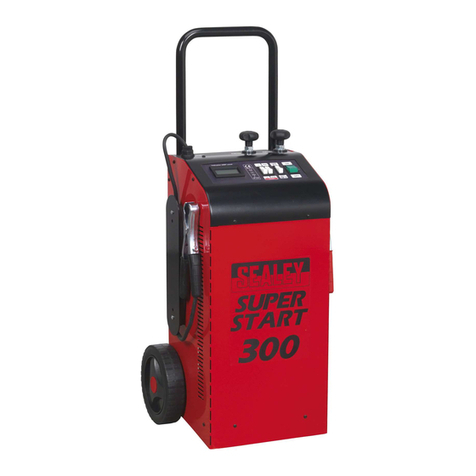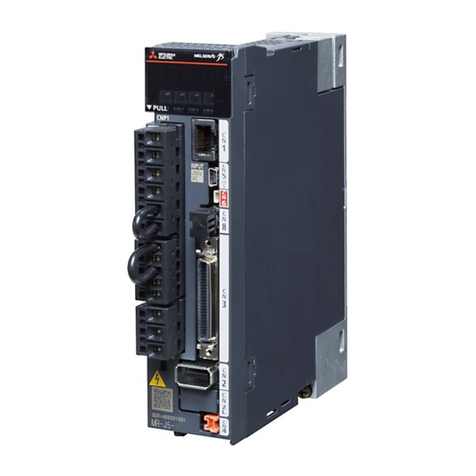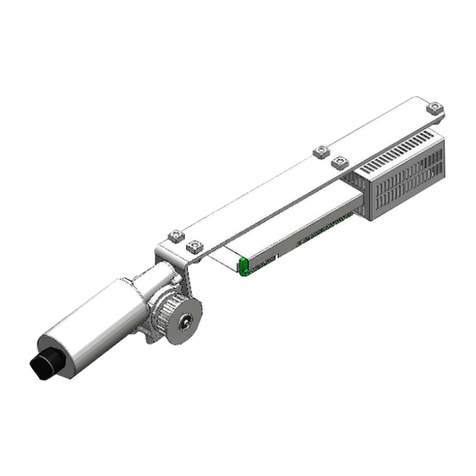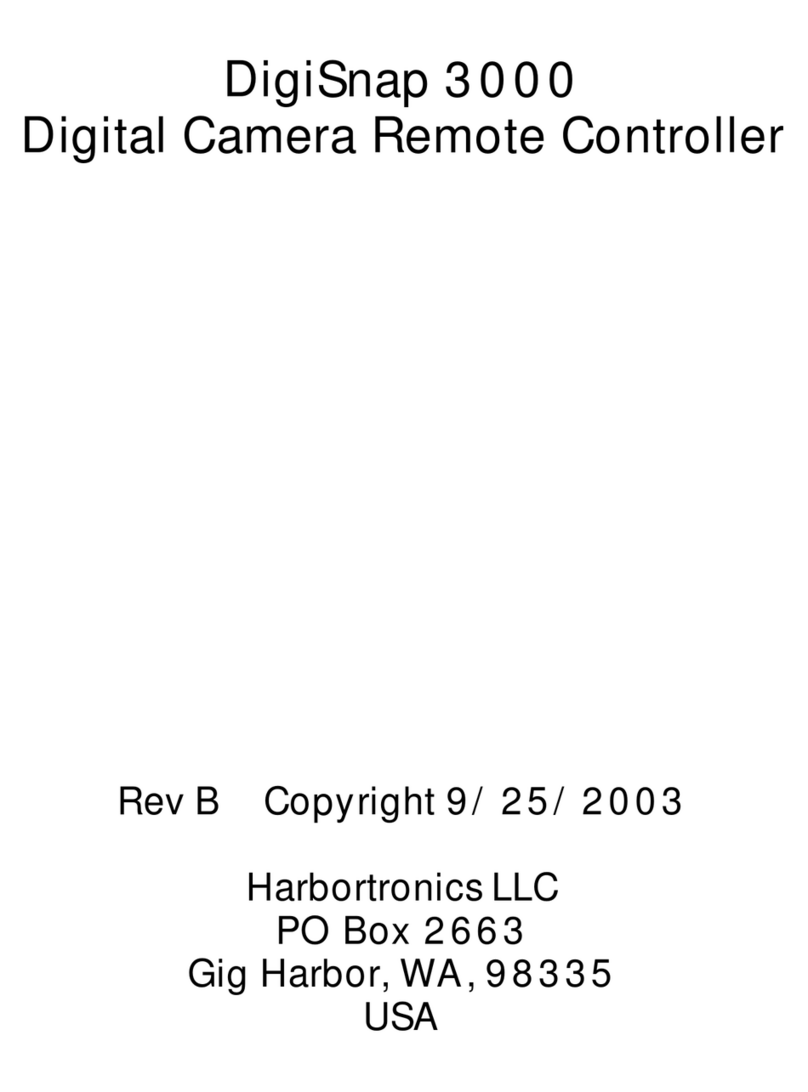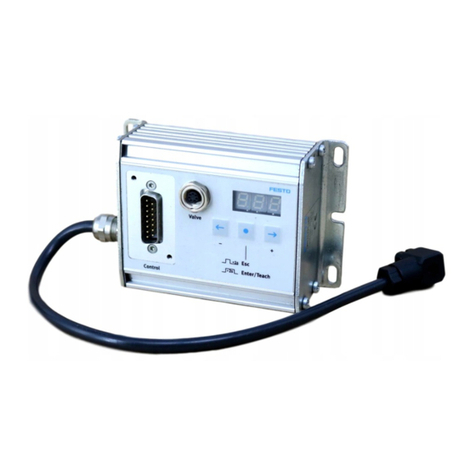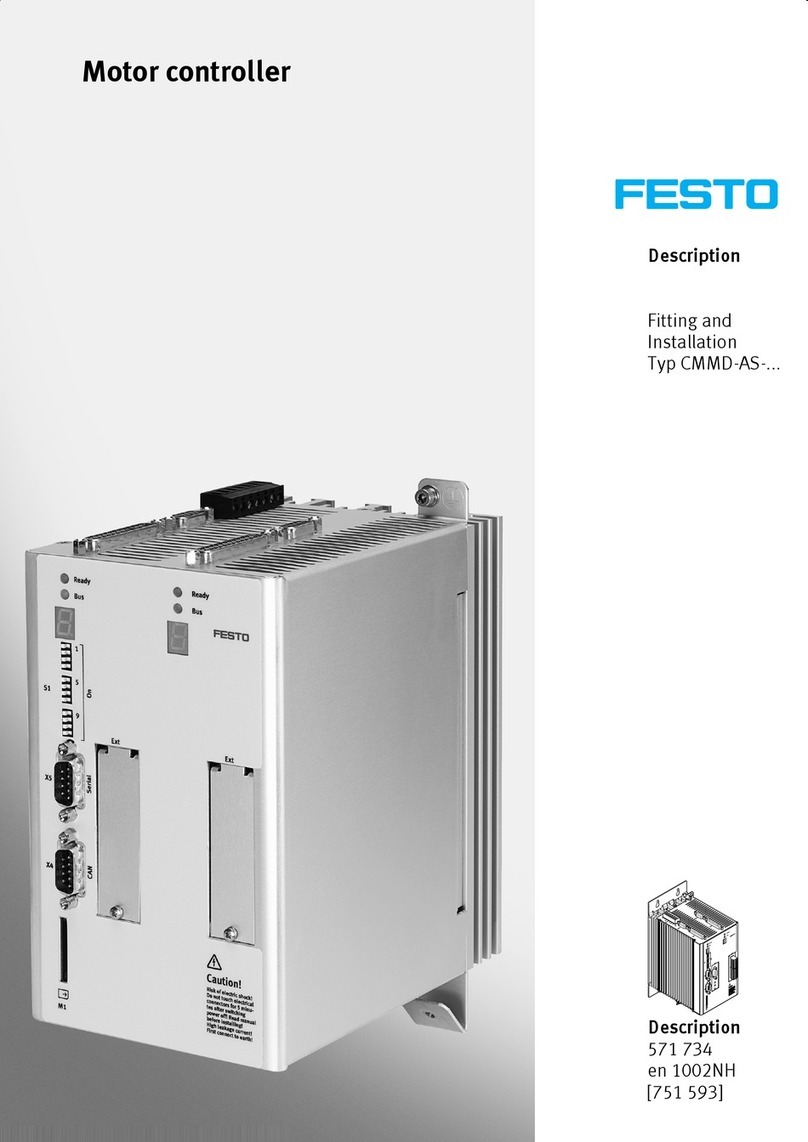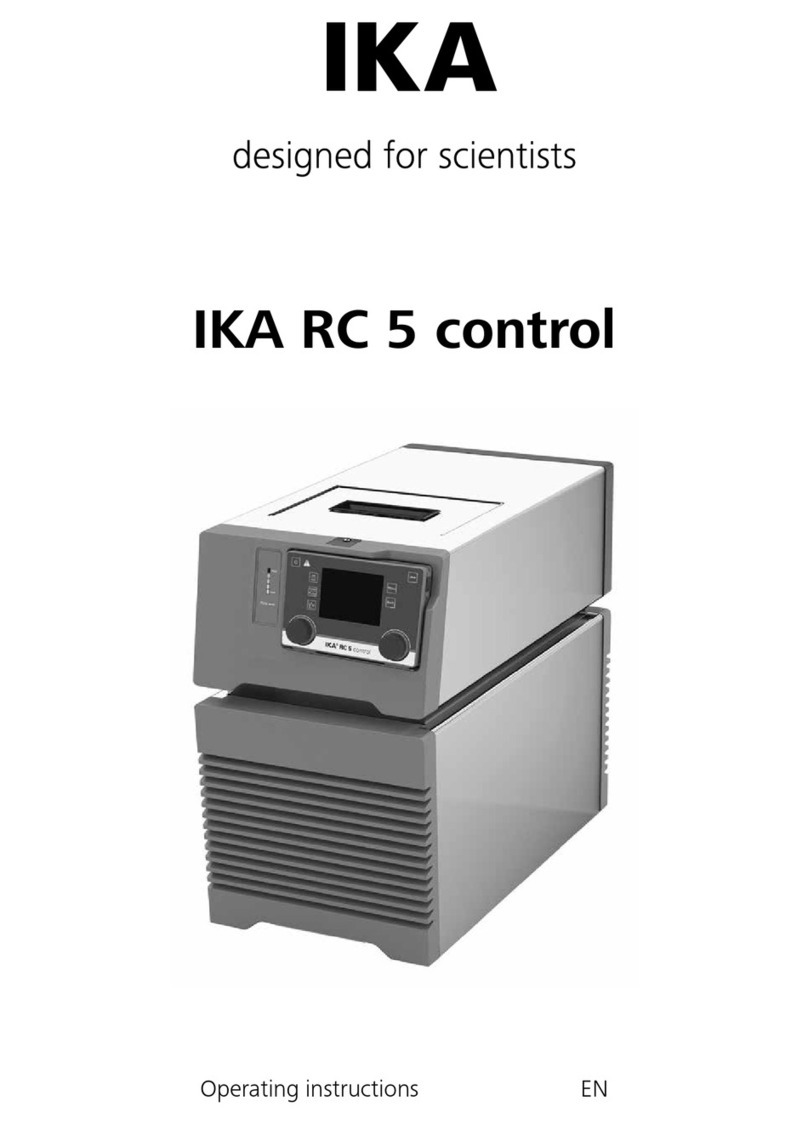
1 Content
Elsner Elektronik GmbH • Sohlengrund 16 • 75395 Ostelsheim • Germany
Cala KNX T 201/202 Sunblind push button • from application 1.0
Status: 24.06.2020 • Technical changes and errors excepted.
1. Description ........................................................................................... 3
1.0.1. Area function ................................................................................................. 4
1.1. Scope of delivery ...................................................................................................... 4
1.2. Technical specifications ........................................................................................... 5
1.2.1. Accuracy of the measurement ..................................................................... 5
2. Installation and commissioning ........................................................... 6
2.1. Installation notes ...................................................................................................... 6
2.2. Installation position .................................................................................................. 6
2.3. Composition of the device ....................................................................................... 8
2.4. Installation of the sensor ......................................................................................... 8
2.5. Notes on mounting and commissioning ................................................................ 9
3. Addressing of the device at the bus .................................................... 9
4. Display and operation at the device .................................................... 9
4.1. Adjust room temperature (using the example Cala KNX T 201 Sunblind) .......... 9
5. Maintenance ....................................................................................... 11
6. Disposal ............................................................................................. 11
7. Transmission protocol ....................................................................... 12
7.1. List of all communication objects ......................................................................... 12
8. Setting the parameters ...................................................................... 16
8.1. Behaviour on power failure/ restoration of power .............................................. 16
8.2. General settings ..................................................................................................... 16
8.3. Temperature measured value ............................................................................... 16
8.4. Temperature threshold values .............................................................................. 17
8.4.1. Threshold value 1, 2 ................................................................................... 17
8.5. Temperature PI controller ...................................................................................... 19
8.5.1. Heating control stage 1/2 ........................................................................... 25
8.5.2. Cooling control stage 1/2 ........................................................................... 27
8.6. LEDs ......................................................................................................................... 29
8.7. Buttons .................................................................................................................... 30
8.7.1. Drive ............................................................................................................. 31
8.7.2. Control modes for drive control ................................................................ 35
8.8. Logic ........................................................................................................................ 36
8.8.1. AND logic outputs 1/2 and OR logic outputs 1/2 ...................................... 37





















